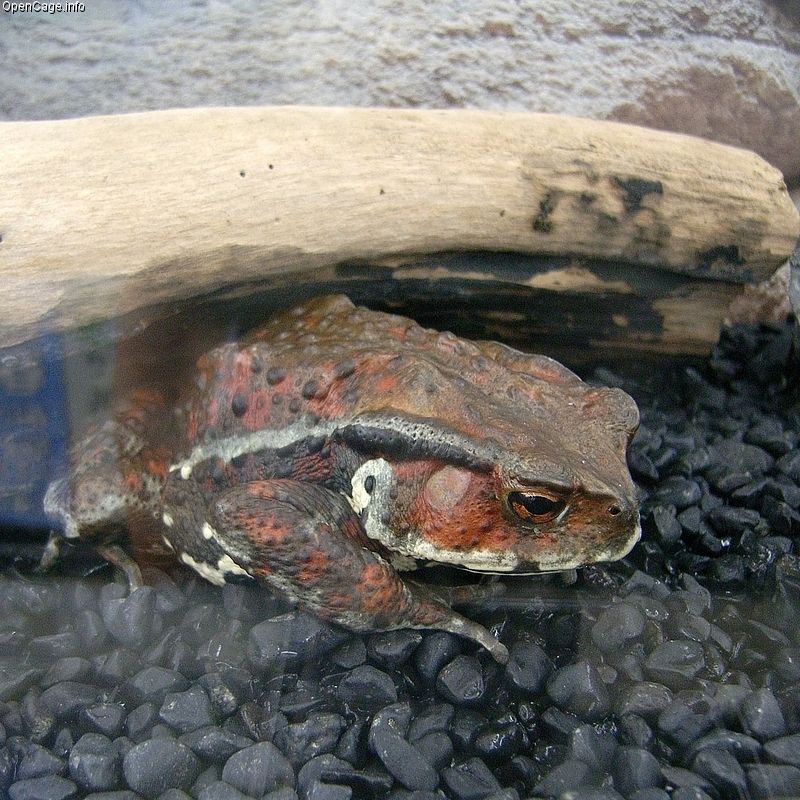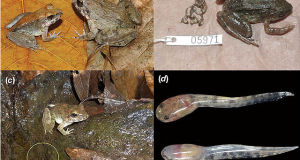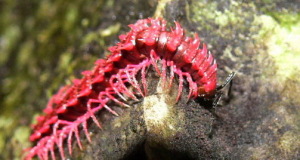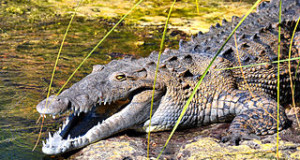 Through several odd twists of fate – for one born in the Bronx, NY and without the means to travel as a child – I’ve found myself with numerous lifelong connections and friends in Japan. I’ve also had the good fortune of spending considerable time with the staff at several institutions there, including the Ueno Zoo, Tama Zoo, Enoshima Aquarium and Osaka Kaiyukan Aquarium. I spent the first days and nights of this month’s disaster checking on friends and colleagues via phone and internet, and have had good and bad news….I don’t have the right words to explain further, and doubt I ever will. I’m now gathering information on zoos and aquariums in northern Honshu (the crisis zone) and would like to pass along this update.
Through several odd twists of fate – for one born in the Bronx, NY and without the means to travel as a child – I’ve found myself with numerous lifelong connections and friends in Japan. I’ve also had the good fortune of spending considerable time with the staff at several institutions there, including the Ueno Zoo, Tama Zoo, Enoshima Aquarium and Osaka Kaiyukan Aquarium. I spent the first days and nights of this month’s disaster checking on friends and colleagues via phone and internet, and have had good and bad news….I don’t have the right words to explain further, and doubt I ever will. I’m now gathering information on zoos and aquariums in northern Honshu (the crisis zone) and would like to pass along this update.
First, however, please allow me to direct you to some reliable sites that are accepting donations for the people of Japan. A massive relief effort is being spearheaded by the NYC-based Japan Society. I’m very familiar with the organization and can vouch for its integrity. You can learn how to help by clicking here.
A Paradise for Zoo and Aquarium Fans
Japan’s Zoos have long specialized in smaller creatures…given my own interests, I was happy to see that Japanese Common Toads (nothing “common” about their colors, please see photo), Japanese Flying Squirrels (one species is the size of a house cat!), scorpions and the like are favored over hippos, lions and elephants. Japanese hobbyists’ and entomologists’ work with insects and other invertebrates is nothing short of unbelievable – I was floored by the Tama Zoo’s giant insect house and its huge walk-through “aviary” for insects. Japan’s aquariums are among the worlds finest, and thrilled me with tiny, as yet un-named deep sea crustaceans, giant Spider Crabs, Whale Sharks and much more.
This focus on small animals may help some institutions in weathering the crisis, but of course it is not clear at this point how any will fare.
The Scope of the Crisis
 Fortunately there have not been, as far as is known, human injuries or fatalities at any zoos or aquariums.
Fortunately there have not been, as far as is known, human injuries or fatalities at any zoos or aquariums.
Several aquariums have been hard-hit by the loss of power. Filtration and other life support systems shut down at Sendai’s Matsushima Aquarium and the Fukushima Aquarium, with a consequent loss of fish and invertebrate life. However, as of last report, the marine mammals and birds fared well, and are being moved to Kamogawa Sea World. Of course, all vehicular movement is being coordinated by Japan’s Self Defense Forces, and forecasts are impossible to make.
Other institutions without power and likely to be critically low on food and supplies include Sendai’s Yagiyama Zoo, the Akita Omoriyama Zoo, the Morioka Zoo, the Hitachi Carmine Zoo and the Asamushi Aquarium.
Report from a Zookeeper
A friend working at Tokyo’s Ueno Zoo reports that zoo staffers everywhere are splitting their time between people in need and the animal collections, as circumstances dictate. Cooperation among the various institutions, always impressive, is at an all-time high.
Certainly the Japanese people, on the whole, love their zoos and aquariums. Ueno Zoo, despite being a mere 35 acres in size, yearly attracts 3-4 times the visitors as does the 600+ acre Bronx Zoo (at my last check, several years ago)!
How You Can Help
 The Japan Zoo and Aquarium Association is coordinating a relief effort on behalf of Japan’s animal caretakers and captive animals. People who may be able to help in any manner – donations, hands-on, ideas – are asked to send an email to kanako-jaza@pony.ocn.ne.jp. You can read an appeal and information letter from JAZA here.
The Japan Zoo and Aquarium Association is coordinating a relief effort on behalf of Japan’s animal caretakers and captive animals. People who may be able to help in any manner – donations, hands-on, ideas – are asked to send an email to kanako-jaza@pony.ocn.ne.jp. You can read an appeal and information letter from JAZA here.
A simple means of contributing money online has also been established by the World Zoo Association. Please click here to donate.
You can also help by emailing zoochat.com at Japanzoorelief@gmail.com; ideas, information and donations are all needed.
I realize that I’ve strayed a bit from our usual topics here, and thank you for your understanding, Frank Indiviglio.
Further Reading
The Japanese Association of Zoos and Aquariums – history and other information
Bufo japonicus image referenced from Wikipedia and originally posted by OpenCage.
 That Reptile Blog – Reptile, Amphibian and Exotic Pet Care and Information
That Reptile Blog – Reptile, Amphibian and Exotic Pet Care and Information




Thank you so much for this post. For the last three years, I have watched the Myagi penguins via LiveCams. I hope they are safe. This has been the only info I have found about the Aquariums. I do not even know if these are the penguins I so enjoy, but thanks for a bit of peace!
Hello Rae Ann, Frank Indiviglio here.
Thanks for your concern and kind words. Captive animals are being handled as best as can be under the circumstances…I’ll post updates as they come in. In time, there will no doubt be studies done on the status of wild populations of many creatures and I’ll report back on that as well.
Please let me know if you need any further information.
Best regards, Frank Indiviglio.
Thanks for covering this. It’s really amzaing that there wasn’t mass mayhem to exhibits of all kinds from this 9.0 quake. I remember the relatively measly 6.5 San Fernando earthquake in Los Angeles had the water in our pool sloshing out in large waves. I would have thought that aquatic exhibits in particular would have been vulnerable in Japan, but it sounds like they escaped. Remarkable, and fortunate!
Hello Brett, Frank Indiviglio here.
Thanks for your comment. Staff at the zoos and aquariums I visited there were as prepared as could be, and have done an amazing job, as have people and rescuers throughout the country. Subsequent power outages have caused unavoidable losses of fishes and invertebrates, but overall the effort is, as you say, quite remarkable.
Please let me know if you need any further information. Good luck, enjoy and please keep me posted.
Best regards, Frank Indiviglio.
I can’t imagine having to deal with power outages in a public aquarium. Truly remarkable feat to keep even some of the creatures alive! Land animals less so.
~Joseph
Hello, Frank Indiviglio here.
Thanks for our note; an amazing and very commendable effort still under way there, as even in Tokyo mandatory outages to conserve electricity were institutes. Many Japanese Zoos also have large insect collections, with specimens that need very specific ranges of heat/cool temps, humidity, and delicate mammals – esp. certain rodents, koalas. Keepers in zoos with no electricity had to work in dark, find ways to preserve foods, and so on, while dealing with their own misfortunes and personal tragedies…simply unbelievable.
Best regards, Frank Indiviglio.